- Home
- Tom Clancy
Armored Cav: A Guided Tour of an Armored Cavalry Regiment Page 3
Armored Cav: A Guided Tour of an Armored Cavalry Regiment Read online
Page 3
By now all this talk of HEAT rounds and long-rod penetrators may have you wondering what I am referring to. So perhaps some explanation is necessary before we go on. HEAT—or shaped-charge—rounds had their origin in the Second World War when weapon makers borrowed an old miners’ trick to “shape” or focus the energy from an explosion into a small area so it could penetrate armored plate. By the end of WWII, such munitions became a serious threat to the tank. And in the early 1960s, when a shaped-charge round was mated to a rocket motor and a guidance system, a really practical, lightweight tank killer had come into being—the anti-tank guided missile (ATGM). Now small vehicles and infantry had the ability to attack and defeat a tank’s frontal armor. Such an attack would have been suicidal in the past. The ATGM proved itself in the 1973 Arab-Israeli War, when several Israeli armored brigades, without infantry support, were badly chopped up when they attacked Egyptian infantry positions (infantry protects tanks by spotting enemy missile teams and suppressing them). During the mid-1970s, military experts debated whether or not ATGMs had rendered the main battle tank obsolete.
But some officers in the U.S. Army chose to look upon the data of the ‘73 war as more than an epitaph for the tank. A closer look at the operational data from the war showed Western tank designers that existing armor types, usually a thin “face-hardened” surface layer on a thick plate of RHA, did not provide sufficient protection against the current generation of HEAT warheads, let alone the next generation due to appear in the early 1980s. As we mentioned earlier, the Soviet Union was fielding tanks in the 1960s with combination (metal and ceramic) armor, long before their Western opponents. But in the early 1970s, the British Army research facility at Chobham, England, developed a revolutionary type of armor with a honeycombed ceramic composite layer sandwiched between steel plates. This new material combination was code-named Burlington, but it is better known by its trade name—Chobham armor.
A diagram of a HEAT round impacting a piece of sloped armor. The round on the left is shown just prior to impact; the one on the right just after detonation of the shaped charge.
JACK RYAN ENTERPRISES, LTD., BY LAURA ALPHER
Because of their mechanical properties, mixed layers of ceramic and metal composites offer excellent protection against HEAT rounds. Ceramics are amorphous, that is to say that they do not have a crystalline structure like metals, but are more “fluid-like,” with a fairly random molecular structure. So when a HEAT round strikes combination armor, the explosive jet quickly pushes through the outer steel layer and tries to burrow through the ceramic. However, unlike metals, which break up along structural boundaries between individual crystals (which stay separated), ceramics tend to flow around the jet and break it up into many smaller “jetlets,” which are quickly dissipated. The disadvantage of combination armor is that it is very bulky, since the ceramic and composite layers have to be of sufficient depth to break up the jet. Consequently, although ceramics are lighter than metals, the overall weight (or mass) of a combination-armor package tends to be about the same as RHA for a given level of protection. Examples of its use can be found in the turret designs on the American M1 Abrams and the British Challenger tanks that were employed so successfully during the 1991 Persian Gulf War. In fact, the newest Chobham-type armor designs tend to be about two to two-and-a-half times more effective against HEAT-type weapons than an equivalent weight of solid RHA.
By the early 1980s, as tanks with combination armor entered service, HEAT rounds became less of a threat to tank survival. This made the kinetic-energy penetrator, once again, the main tank killer. Kinetic-energy penetrators rely on impact to pierce armor. While HEAT rounds derive most of their penetration capability from the explosive jet’s velocity, kinetic-energy penetrators use both mass and velocity to do the job. Modern armor-piercing fin-stabilized discarding-sabot (APFSDS) rounds are very dense, long, slender darts (hence the name long-rod penetrators) that burrow into a tank’s armor on impact. If it has sufficient kinetic energy, the dart goes right through the tank’s armor and raises hell inside. These long-rod penetrators, unlike shaped-charge jets, are solid and are not broken up by the amorphous structure of the ceramics in combination armor. However, ceramics possess another property that has an effect on kinetic-energy rounds. This property is hardness: the ability of a material to resist scratching or penetration. The higher the hardness value, the greater the kinetic energy required to penetrate the material.
Now, as far as kinetic-energy protection is concerned, RHA is pretty soft stuff (relatively speaking), and can easily be pushed aside by a high-velocity long-rod penetrator. Though steel can be hardened by special treatments (such as nitriding or carburizing), you can’t make an entire hull out of very hard steel. It is exceedingly difficult to fabricate and weld large thick pieces of high-hardness steel into armored structures. Another problem is that metals with high hardness are brittle and tend to shatter like glass under high-energy impact. So combining layers of hard and soft steel is advantageous. If the hardened face steel is tough enough, the attacking projectile may be deflected outright, break up on impact, or have its nose squashed (i.e., no longer a nice sharp point). Because of this “blunting” effect, the projectile has to expend more energy to penetrate the underlying softer steel. And the softer steel can absorb energy because it readily deforms, or gives, under the load. In this way it tends to dissipate the energy of the round.
An APFSDS round impacting and defeating an armor plate. Note the spall fragments which are thrown inward by the penetration of the “dart.”
JACK RYAN ENTERPRISES. LTD., BY LAYRA ALPHER
Hardened steel, however, is still relatively soft compared to ceramics. For example, silicon carbide (a ceramic used to make drill bits) is about three to four times as hard as RHA. Thus, combination armor with hard ceramic/composite blocks supported by RHA protects against kinetic-energy attacks about as well as a combination of hard and soft steels (one needs to remember that these armors were specifically designed to defeat the large HEAT warheads in ATGMs). Another advantage (sort of a backhanded advantage actually) that combination armor has over RHA is that it is usually thicker, so there is more material that a long-rod penetrator has to go through before it gets to the inside of the tank. And the addition of a layer of depleted uranium (DU) in the HA variant of the M1 Abrams tank makes it even more resistant to kinetic-energy rounds. While precisely how this is done remains one of the really black secrets within the U.S. Army, it doubles the effectiveness of the M1’s armor against long-rods. The exact composition of the M 1’s armor is so secret that the armor package stuffing room is the only place that you are not allowed to see in the M1 factory at Lima, Ohio. In fact, one worker on the factory floor described it as the “kryptonite” room.
Armor Slope—A final factor in the effectiveness of an armor package is the slope of the armored face. The degree of slope of an armored surface has two major effects. First, if the slope angle is 60° or greater, there is a good chance that a projectile will ricochet off the armor face, causing little or no damage. Second, the slope angle determines the amount of armor that a long-rod penetrator or HEAT jet will actually have to push through before it reaches the tank’s interior. The basic rule of thumb is that the greater the slope, the greater the protection; for that increases the effective thickness of the armor. Thus, the average frontal armor slope has increased steadily throughout the history of the tank. In World War I the slope was 0° on many vehicles. By the end of World War II, frontal armor slopes were between 45° and 60°. Modern main battle tanks generally have front armor slopes around 70°, although the M1 series of tanks have a front armor slope of about 80°. Thus, if a tank has a frontal armor plate 200mm thick, with a slope of 70°, then the actual thickness a weapon would have to defeat would be 584mm. This is a lot of armor!
So how do all of these things add up when it comes to a real-world tank design? Consider the following. The Russian T-72 tank (according to reports published in defense journals) has front
al armor made up of a layered combination of steel, ceramics, and composites. Its thickness is about 200mm, and the slope is 68°. A rough calculation of the RHA equivalents for chemical and kinetic-energy attacks would give an RHA equivalent of 720mm (about 28.3”) against a HEAT round, and 454mm (about 17.9”) against a kinetic-energy penetrator. The danger with this type of calculation is that each armor type can’t be easily boiled down to a simple number. And there is little published in the open literature about how different types of armor arrays react to each type of weapon. What this crude estimate of the T-72 does illustrate, though, is that it probably has sufficient protection to withstand an attack from almost all infantry anti-tank weapons with HEAT rounds (400-600mm penetration capability) such as the Russian RPG-7. In addition, penetration isn’t an end in itself. There must be sufficient residual energy in the HEAT jet to disable or kill a tank and its occupants. If an ATGM has just enough energy to penetrate the armor, the tank will still be able to fight. Thus, there has to be some residual energy left to blow fragments and spalls (chunks literally peeled off the armor) into the interior in order to kill the tank or the crew.
Reactive Armor—The newest fashion in armor technology is explosive reactive armor (ERA). ERA was developed by Israel (under the trade name of Blazer) and deployed on Israeli Merkava, as well as the U.S.-made M60 and M48 Patton tanks, during the 1982 Lebanon invasion. During that operation, the Israeli Army lost several tanks fitted with ERA; and it is rumored that the Arabs gave samples to the Soviets. In any event, by about 1985, Soviet T-64, T- 72, and T-80 tanks started showing up with heavy applications of ERA on the front, sides, and turret. By adding the ERA to their tanks (already fitted with HEAT-resistant combination armor), the Soviets had sufficient protection against virtually all current ATGMs.
ERA looks like a set of child’s toy blocks, and is usually fitted to the exposed forward surfaces of an armored vehicle. It works like this: When a shaped-charge jet hits an ERA block, the impact detonates an explosive charge sandwiched between two steel plates. This explosion pushes the outer plate into the HEAT jet, which now has to cut through the plate to get to the main armor. The inner plate is driven against the hull and rebounds back into the path of the now-disrupted jet. The energy of the shaped-charge jet is absorbed by the two moving plates, as the jet must continually cut through fresh material. The remaining highly disrupted jet lacks sufficient punch to penetrate the main armor.
Reactive armor in action. In the lower view, a HEAT round is approaching a reactive-armor box (a sandwich of explosive between metal plates). When the round strikes the box (see the upper view), the explosive in the box detonates at the same time as the HEAT warhead, disrupting the flow of the plasma jet.
JACK RYAN ENTERPRISES, LTD., BY LAURA ALPHER
ERA does have some severe limitations, however. The effectiveness of ERA against shaped-charge jets is very dependent on slope angle. When you look at a Soviet/Russian T-72 fitted with ERA blocks, you see these at roughly the same angle as the main hull. At an angle of 68°, the ERA disrupts approximately 75% of the shaped-charge jet, but ERA at an angle of 0° only disrupts about 10-15% of a HEAT jet. It didn’t take long to figure out that top attack (a warhead firing down into the tank) was one way to defeat this new armor variation. Even if you completely cover the top of your turret with ERA, a top-attack warhead will strike it at an angle close to 0°, so you gain little extra protection for the cost and weight. The Swedish Bill and the U.S. TOW-2B are examples of this technique in use. Another variation is the “dual” warhead, which uses a small explosive charge to detonate the reactive-armor block. This is followed by a main warhead to defeat the primary armor of the tank. Such a dual warhead is used in the U.S. Army’s latest model of Hellfire anti-armor missiles. The Russians have even designed a triple-warhead, 125mm HEAT round, designated 3BK27, which is reportedly able to defeat modern Western armor packages.
Earlier 1 mentioned that a long-rod penetrator would also detonate the ERA block. However, unlike the HEAT round explosive jet, which has very little mass, the long-rod is just too massive for the thin steel plates of the ERA block. As a result, penetration is only marginally degraded by going through a layer of ERA. There is on the drawing boards an ERA block with thicker plates, designed to snap the long-rod penetrator in two through a shearing action. While this “thick-wall” ERA gives improved protection against long-rods, the protection it gives against a HEAT round is reduced. There is no such thing as a free lunch!
Using ERA poses two more problems. First, it is one-shot protection. Once a spot on an ERA-protected vehicle is hit, the area that has been struck is no longer shielded (until you install a new ERA block). Second, dismounted infantry cannot escort tanks fitted with ERA, because the exploding ERA blocks throw out lots of fragments, shredding any nearby troops!
In other words, modern main battle tanks have not become science-fiction ogres—irresistible killing machines. For one thing, it must be remembered that today’s tanks and armored fighting vehicles only have massive protection on the front of the vehicle. The sides, rear, top, and bottom are not only relatively thin-skinned, but there is no way to angle the armor in these locations effectively. So, while a T-72 with reactive armor has an RHA equivalent of over 1,000mm (about 39.4”) against a HEAT round on its front, it has at best between 100mm (about 3.9”) to 135mm (about 5.3”) of RHA equivalent armor on the sides, and even less in the rear. Thus a tank is anything but invulnerable. And only good tactical employment will keep its strong side aimed toward the weapons that are trying to destroy it.
Consider the following: The Hellfire antitank missile, originally fielded in 1986, had about 1,050mm of RHA penetration capability. It probably would not penetrate a Soviet T-72 tank’s front plate augmented with reactive armor. But if fired into the T-72’s side, a German World War II Panzerfaust 100 (fielded in 1944, with about 200mm RHA penetration capability) would cut right through and probably knock the tank out. Hellfires fired at T-72s from the side during Desert Storm usually blew the tank’s turret into the air, and blew out the sides of the armored box hull. Thus, the ogre has Achilles’ heels.
And this brings up a point about Soviet tank design. Compared to tank designs in the West, Russian tanks have small front profiles. Russian tanks are designed to present the smallest possible target, reducing the probability of being hit. When they are trying to sell their tanks to other countries, the Russians promote this as a significant advantage. In comparison to the German Leopard II, for instance, the T-72 is roughly half a meter (about 20”) shorter in height and three-quarters of a meter (about 30”) shorter in length. Additionally, compared with the massive box-like turrets of the German Leopard II and the American M 1 Abrams, Russian turrets are also very small. Unfortunately, users of Soviet tanks like the T-72 have found that the relatively small reduction in target area means a severely reduced internal volume. In comparison to Western tanks, Russian tanks have about half the usable internal space. Should a long-rod penetrator or a shaped-charge explosive jet penetrate the hull or turret, there is a higher probability that fragments and spall will hit something critical. There is simply less space to rattle around in. And with such small turrets, the Russians have no room to store ammunition in blast-resistant bustles with blowout panels (such as the American Abrams tanks employ). Instead they have to store ammunition down in the hull, risking catastrophic explosion if the armor is penetrated. So if a Russian used-tank salesman offers you a deal on some low-mileage T-64s or T-72s, just say Nyet!
Anti-Tank Weapons—The Dragon Killers
Over the last three-quarters of a century, a variety of different weapons has evolved to destroy the armored monsters that roam the battlefield. The first anti-tank weapons were large-caliber rifles (similar to those used for hunting elephants and rhinos) firing heavy slugs. These crude weapons were soon replaced by more effective methods of penetrating armor. Historically, the most dangerous enemy of a tank is another tank. The projectiles thrown by tank main guns have
become the most lethal anti-tank weapon. To understand why, let’s look at a few of these dragon killers.
A cutaway of 120mm M829 kinetic-energy penetrating round of the type used on the M1 Abrams main battle tank. A special version of this round, the MY29A2, became known as the “Silver Bullet” during the 1991 Persian Gulf War.
JACK RYAN ENTERPRISES, LTD., BY LAURA ALPHER
The 120mm M830 HEAT round used by the M1 Abrams main battle tank.
JACK RYAN ENTERPRISES, LTD., BY LAURA ALPHER
Long-Rod Penetrators—Long-rod penetrators are officially known as High-Velocity, Armor-Piercing, Fin-Stabilized, Discarding-Sabot (HVAPFSDS) projectiles. These are sub-caliber (smaller than the diameter of the firing gun) projectiles designed to penetrate a tank’s armor through brute force. To put it another way, this weapon is the modern equivalent of King Edward’s longbow archers at the Battle of Crecy. Modern long-rod penetrators are made of solid tungsten or depleted-uranium alloys. Both are extremely dense and very hard. Some earlier long-rods were made of stainless steel with tungsten cores, but these tended to shatter on impact with the modern armor packages used on today’s tanks. Depleted-uranium (DU) alloys have slightly better penetration performance than tungsten alloys, but DU is somewhat radioactive and the dust (UO2) is very toxic. Since tank ammunition is stowed in a separate armored compartment, the tank’s crew is effectively shielded from radiation and chemical hazards before the DU round is fired, but this protection is lost when the round impacts on a target. Consequently, battlefield contamination has raised some environmental concerns. In addition, DU is difficult to manufacture and work with safely. So why bother with DU at all?

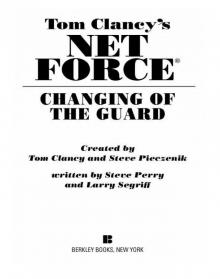 Changing of the Guard
Changing of the Guard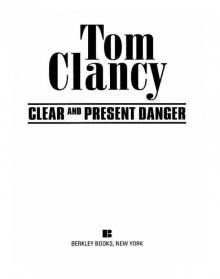 Clear and Present Danger
Clear and Present Danger Hounds of Rome
Hounds of Rome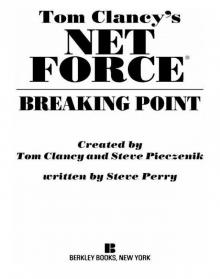 Breaking Point
Breaking Point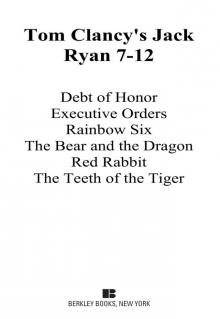 Tom Clancy's Jack Ryan Books 7-12
Tom Clancy's Jack Ryan Books 7-12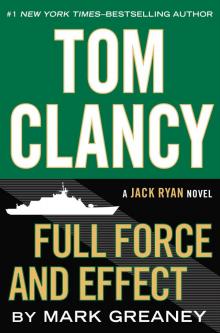 Full Force and Effect
Full Force and Effect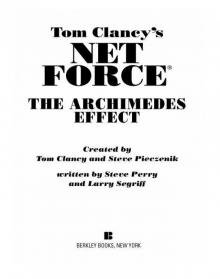 The Archimedes Effect
The Archimedes Effect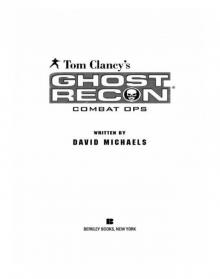 Combat Ops
Combat Ops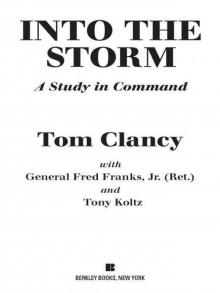 Into the Storm: On the Ground in Iraq
Into the Storm: On the Ground in Iraq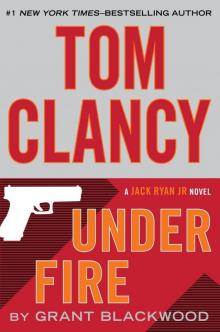 Under Fire
Under Fire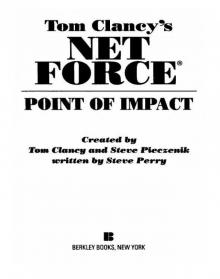 Point of Impact
Point of Impact Red Rabbit
Red Rabbit Rainbow Six
Rainbow Six The Hunt for Red October
The Hunt for Red October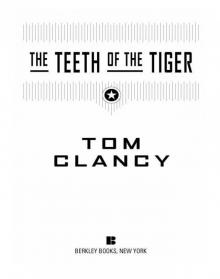 The Teeth of the Tiger
The Teeth of the Tiger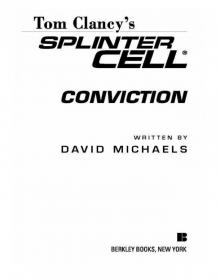 Conviction (2009)
Conviction (2009)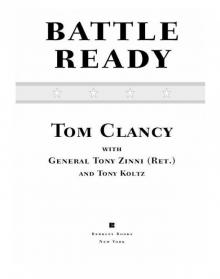 Battle Ready
Battle Ready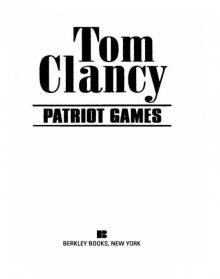 Patriot Games
Patriot Games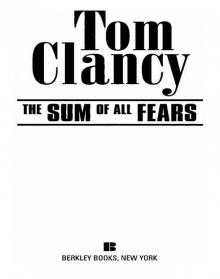 The Sum of All Fears
The Sum of All Fears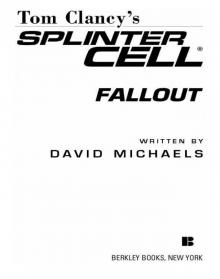 Fallout (2007)
Fallout (2007) Red Storm Rising
Red Storm Rising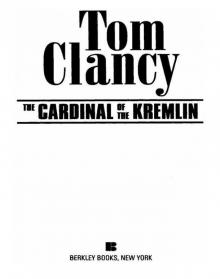 The Cardinal of the Kremlin
The Cardinal of the Kremlin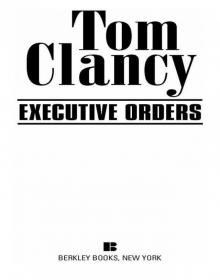 Executive Orders
Executive Orders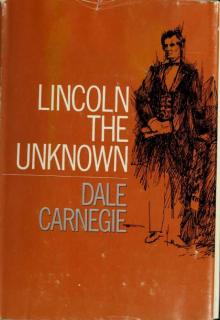 Lincoln, the unknown
Lincoln, the unknown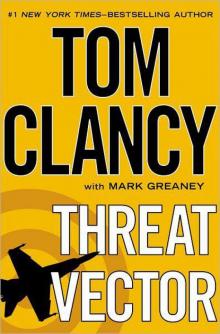 Threat Vector
Threat Vector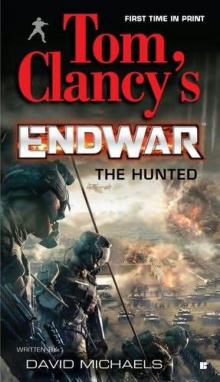 The Hunted
The Hunted Shadow Warriors: Inside the Special Forces
Shadow Warriors: Inside the Special Forces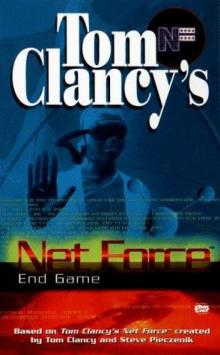 End Game
End Game Special Forces: A Guided Tour of U.S. Army Special Forces
Special Forces: A Guided Tour of U.S. Army Special Forces Locked On
Locked On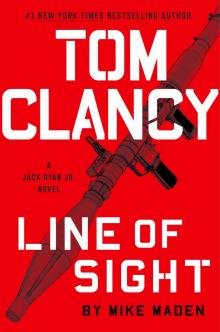 Line of Sight
Line of Sight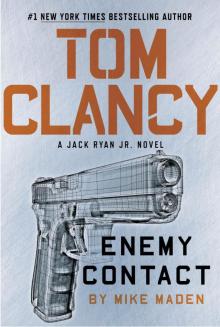 Tom Clancy Enemy Contact - Mike Maden
Tom Clancy Enemy Contact - Mike Maden Fighter Wing: A Guided Tour of an Air Force Combat Wing
Fighter Wing: A Guided Tour of an Air Force Combat Wing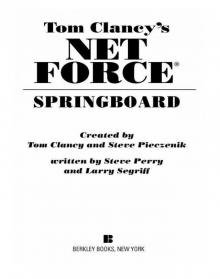 Springboard
Springboard Line of Sight - Mike Maden
Line of Sight - Mike Maden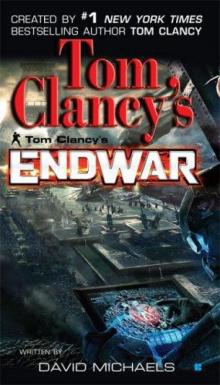 EndWar
EndWar Dead or Alive
Dead or Alive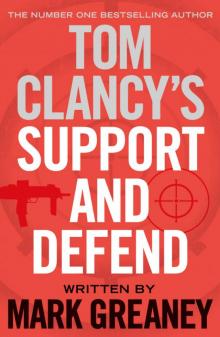 Tom Clancy Support and Defend
Tom Clancy Support and Defend Checkmate
Checkmate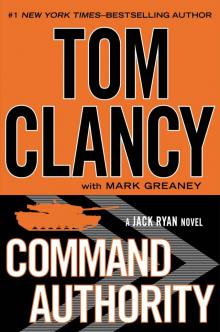 Command Authority
Command Authority Carrier: A Guided Tour of an Aircraft Carrier
Carrier: A Guided Tour of an Aircraft Carrier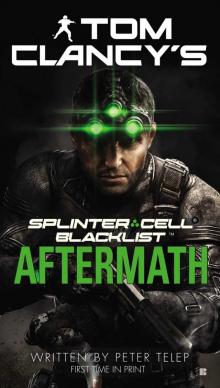 Blacklist Aftermath
Blacklist Aftermath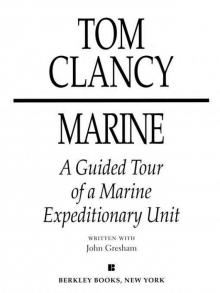 Marine: A Guided Tour of a Marine Expeditionary Unit
Marine: A Guided Tour of a Marine Expeditionary Unit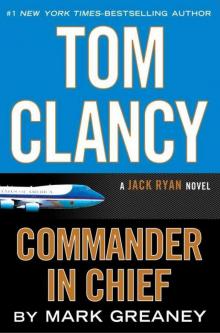 Commander-In-Chief
Commander-In-Chief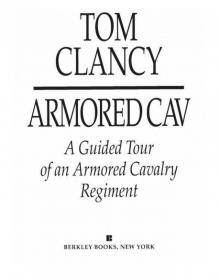 Armored Cav: A Guided Tour of an Armored Cavalry Regiment
Armored Cav: A Guided Tour of an Armored Cavalry Regiment Tom Clancy's Jack Ryan Books 1-6
Tom Clancy's Jack Ryan Books 1-6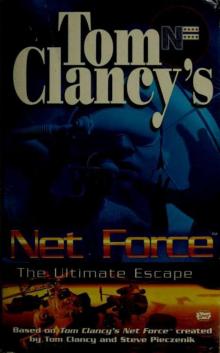 The Ultimate Escape
The Ultimate Escape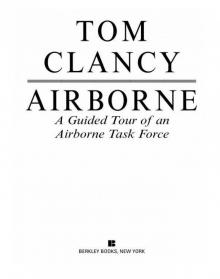 Airborne: A Guided Tour of an Airborne Task Force
Airborne: A Guided Tour of an Airborne Task Force Debt of Honor
Debt of Honor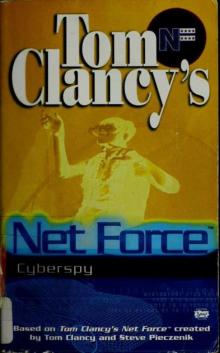 Cyberspy
Cyberspy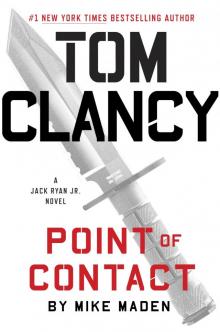 Point of Contact
Point of Contact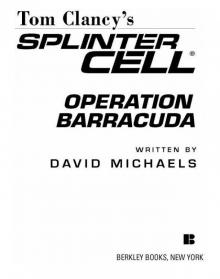 Operation Barracuda (2005)
Operation Barracuda (2005)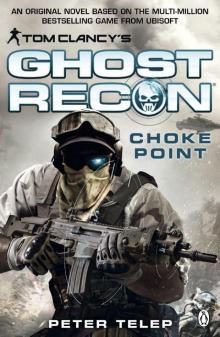 Choke Point
Choke Point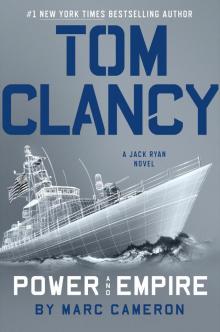 Power and Empire
Power and Empire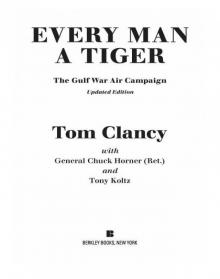 Every Man a Tiger: The Gulf War Air Campaign
Every Man a Tiger: The Gulf War Air Campaign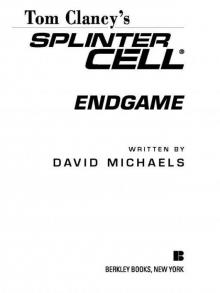 Endgame (1998)
Endgame (1998)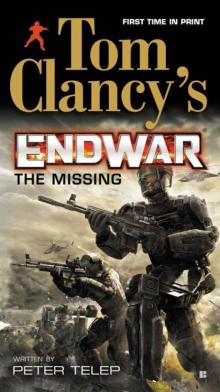 EndWar: The Missing
EndWar: The Missing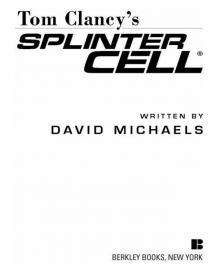 Splinter Cell (2004)
Splinter Cell (2004)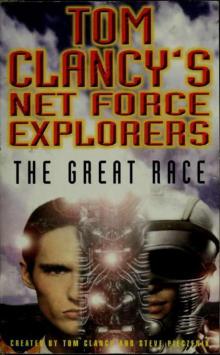 The Great Race
The Great Race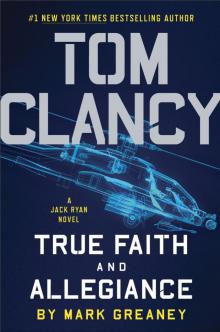 True Faith and Allegiance
True Faith and Allegiance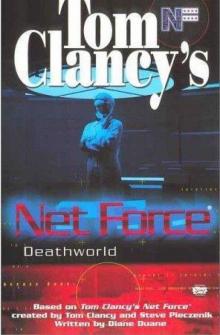 Deathworld
Deathworld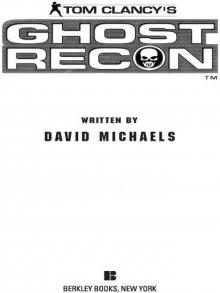 Ghost Recon (2008)
Ghost Recon (2008)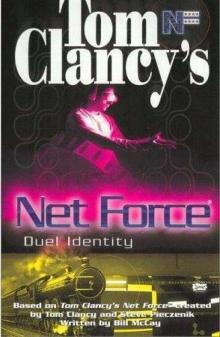 Duel Identity
Duel Identity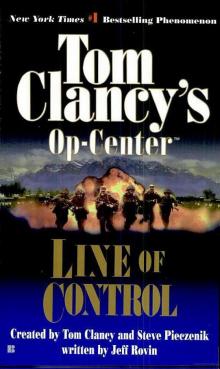 Line of Control o-8
Line of Control o-8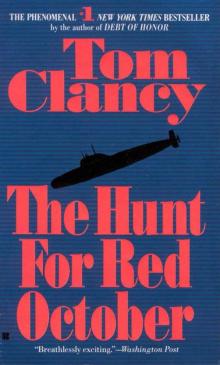 The Hunt for Red October jr-3
The Hunt for Red October jr-3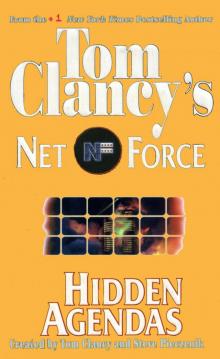 Hidden Agendas nf-2
Hidden Agendas nf-2 Acts of War oc-4
Acts of War oc-4 Ruthless.Com pp-2
Ruthless.Com pp-2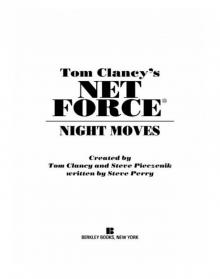 Night Moves
Night Moves The Hounds of Rome - Mystery of a Fugitive Priest
The Hounds of Rome - Mystery of a Fugitive Priest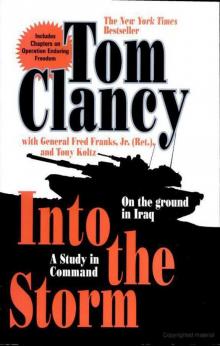 Into the Storm: On the Ground in Iraq sic-1
Into the Storm: On the Ground in Iraq sic-1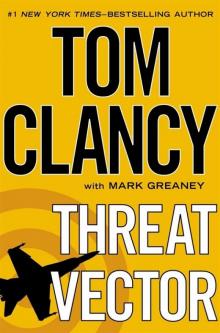 Threat Vector jrj-4
Threat Vector jrj-4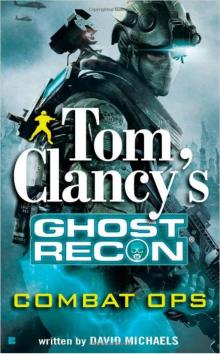 Combat Ops gr-2
Combat Ops gr-2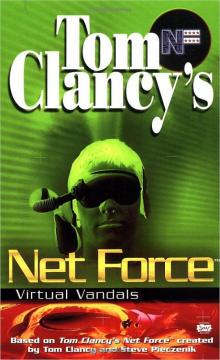 Virtual Vandals nfe-1
Virtual Vandals nfe-1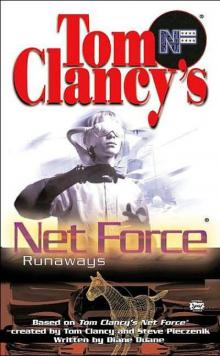 Runaways nfe-16
Runaways nfe-16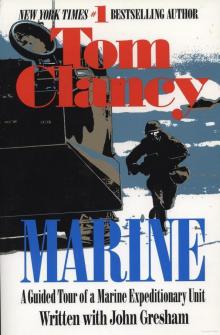 Marine: A Guided Tour of a Marine Expeditionary Unit tcml-4
Marine: A Guided Tour of a Marine Expeditionary Unit tcml-4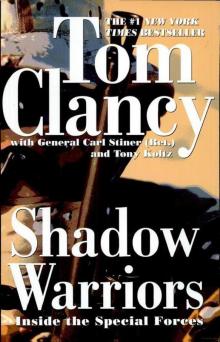 Shadow Warriors: Inside the Special Forces sic-3
Shadow Warriors: Inside the Special Forces sic-3 Jack Ryan Books 1-6
Jack Ryan Books 1-6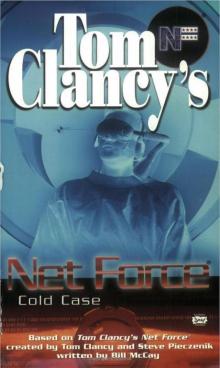 Cold Case nfe-15
Cold Case nfe-15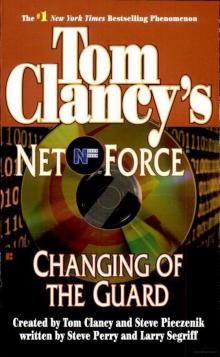 Changing of the Guard nf-8
Changing of the Guard nf-8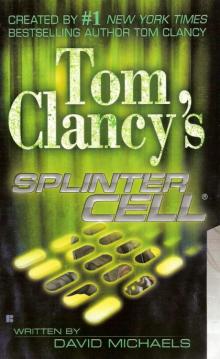 Splinter Cell sc-1
Splinter Cell sc-1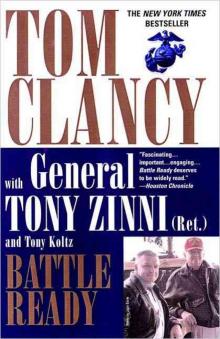 Battle Ready sic-4
Battle Ready sic-4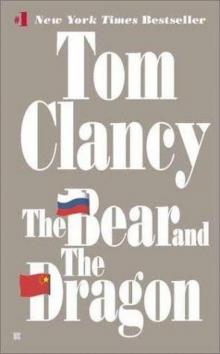 The Bear and the Dragon jrao-11
The Bear and the Dragon jrao-11 Fighter Wing: A Guided Tour of an Air Force Combat Wing tcml-3
Fighter Wing: A Guided Tour of an Air Force Combat Wing tcml-3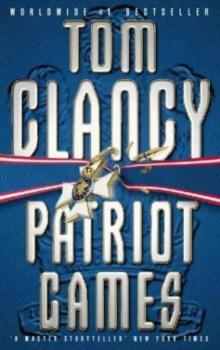 Patriot Games jr-1
Patriot Games jr-1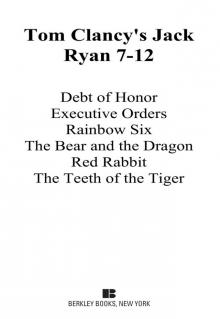 Jack Ryan Books 7-12
Jack Ryan Books 7-12 Mission of Honor o-9
Mission of Honor o-9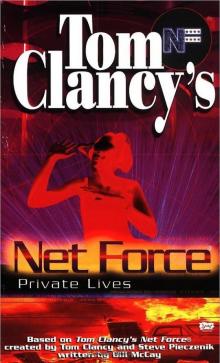 Private Lives nfe-9
Private Lives nfe-9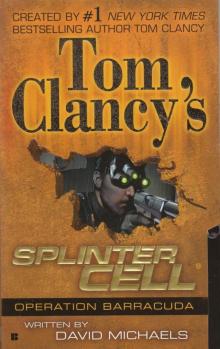 Operation Barracuda sc-2
Operation Barracuda sc-2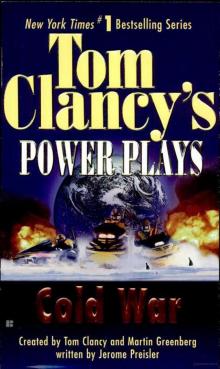 Cold War pp-5
Cold War pp-5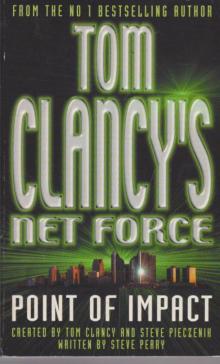 Point of Impact nf-5
Point of Impact nf-5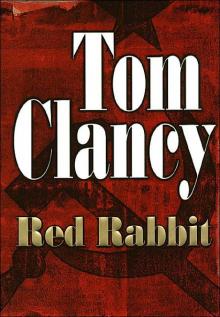 Red Rabbit jr-9
Red Rabbit jr-9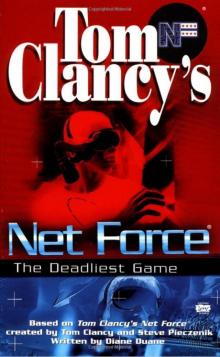 The Deadliest Game nfe-2
The Deadliest Game nfe-2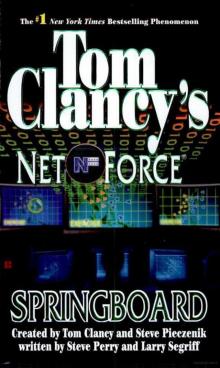 Springboard nf-9
Springboard nf-9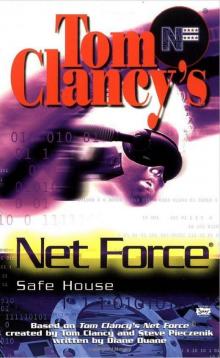 Safe House nfe-10
Safe House nfe-10 EndWar e-1
EndWar e-1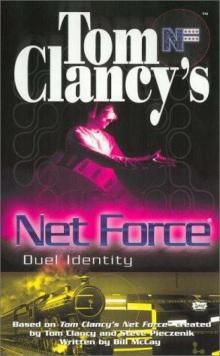 Duel Identity nfe-12
Duel Identity nfe-12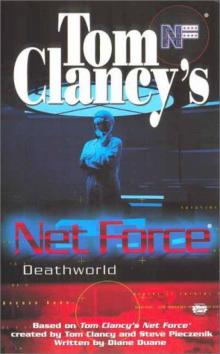 Deathworld nfe-13
Deathworld nfe-13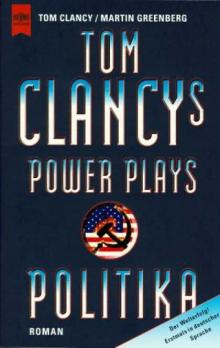 Politika pp-1
Politika pp-1 Rainbow Six jr-9
Rainbow Six jr-9 Tom Clancy's Power Plays 1 - 4
Tom Clancy's Power Plays 1 - 4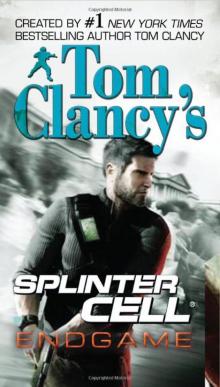 Endgame sc-6
Endgame sc-6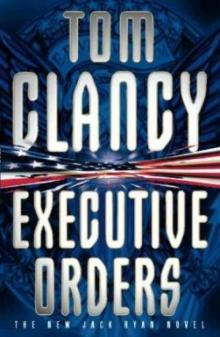 Executive Orders jr-7
Executive Orders jr-7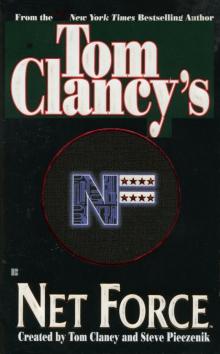 Net Force nf-1
Net Force nf-1 Call to Treason o-11
Call to Treason o-11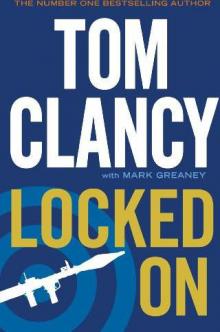 Locked On jrj-3
Locked On jrj-3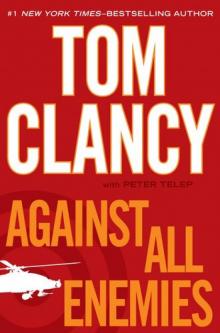 Against All Enemies
Against All Enemies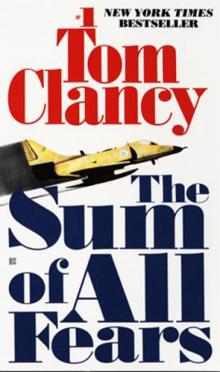 The Sum of All Fears jr-7
The Sum of All Fears jr-7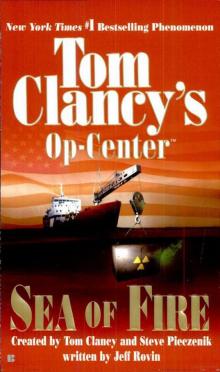 Sea of Fire o-10
Sea of Fire o-10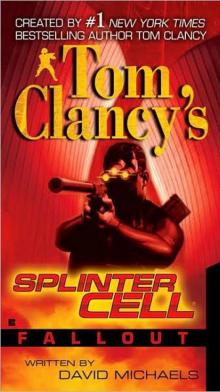 Fallout sc-4
Fallout sc-4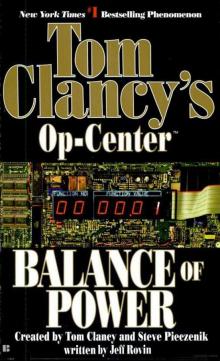 Balance of Power o-5
Balance of Power o-5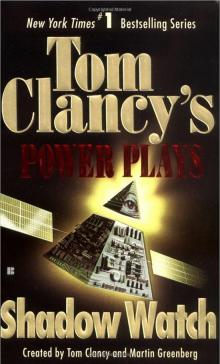 Shadow Watch pp-3
Shadow Watch pp-3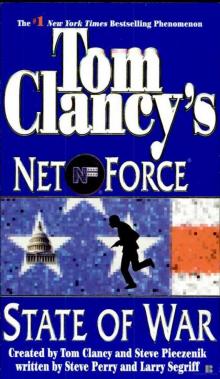 State of War nf-7
State of War nf-7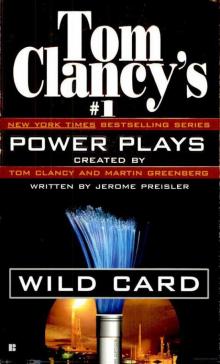 Wild Card pp-8
Wild Card pp-8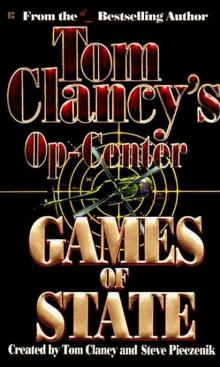 Games of State o-3
Games of State o-3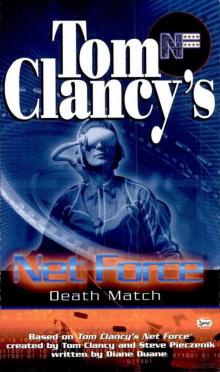 Death Match nfe-18
Death Match nfe-18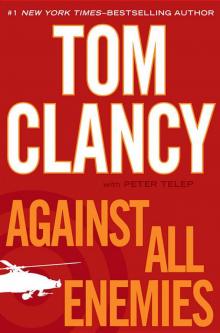 Against All Enemies mm-1
Against All Enemies mm-1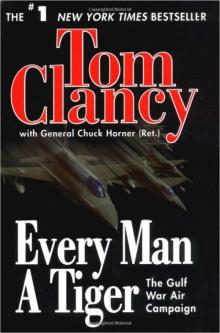 Every Man a Tiger: The Gulf War Air Campaign sic-2
Every Man a Tiger: The Gulf War Air Campaign sic-2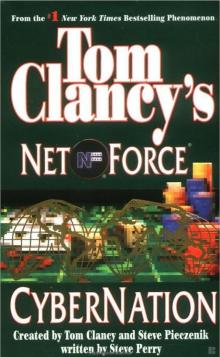 Cybernation nf-6
Cybernation nf-6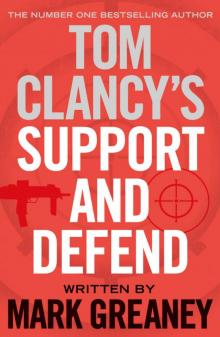 Support and Defend
Support and Defend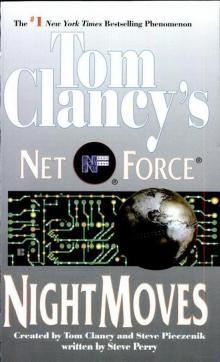 Night Moves nf-3
Night Moves nf-3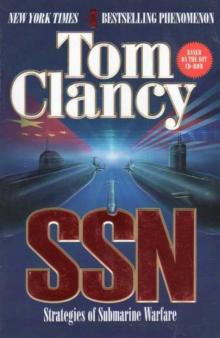 SSN
SSN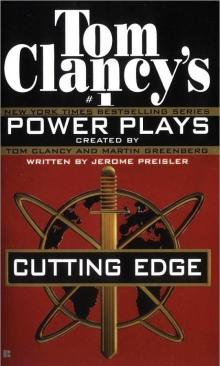 Cutting Edge pp-6
Cutting Edge pp-6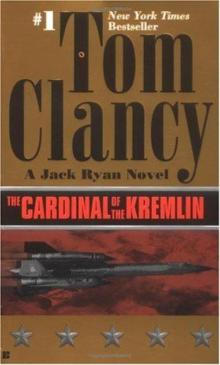 The Cardinal of the Kremlin jrao-5
The Cardinal of the Kremlin jrao-5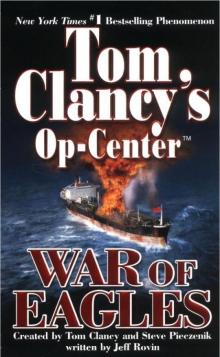 War of Eagles o-12
War of Eagles o-12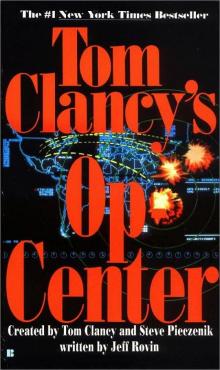 Op-Center o-1
Op-Center o-1 Mirror Image o-2
Mirror Image o-2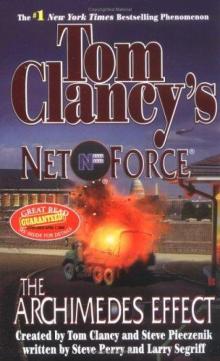 The Archimedes Effect nf-10
The Archimedes Effect nf-10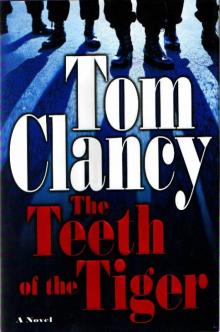 Teeth of the Tiger jrj-1
Teeth of the Tiger jrj-1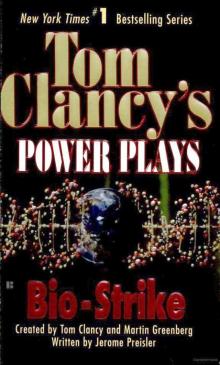 Bio-Strike pp-4
Bio-Strike pp-4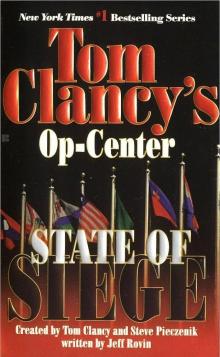 State of Siege o-6
State of Siege o-6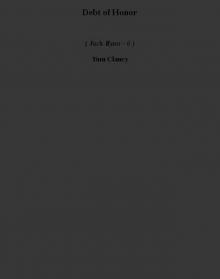 Debt of Honor jr-6
Debt of Honor jr-6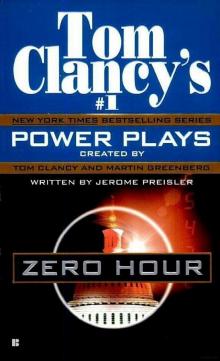 Zero Hour pp-7
Zero Hour pp-7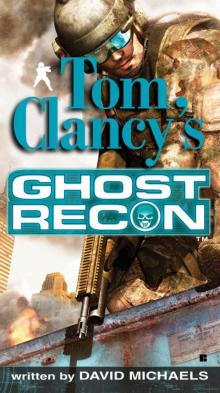 Ghost Recon gr-1
Ghost Recon gr-1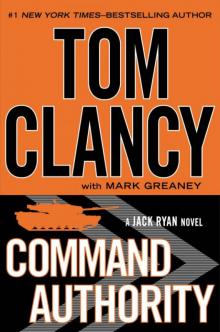 Command Authority jr-10
Command Authority jr-10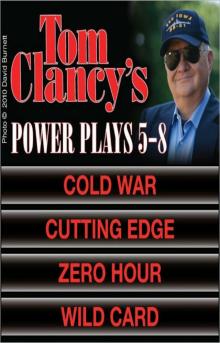 Tom Clancy's Power Plays 5 - 8
Tom Clancy's Power Plays 5 - 8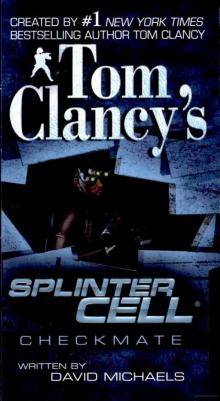 Checkmate sc-3
Checkmate sc-3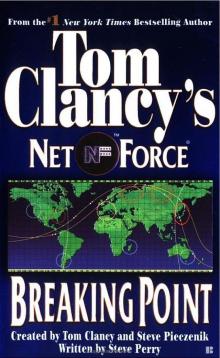 Breaking Point nf-4
Breaking Point nf-4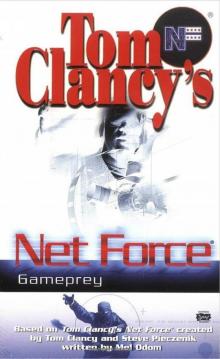 Gameprey nfe-11
Gameprey nfe-11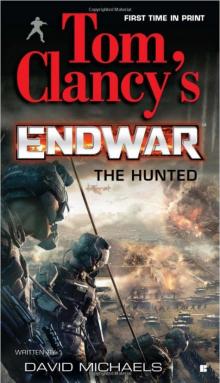 The Hunted e-2
The Hunted e-2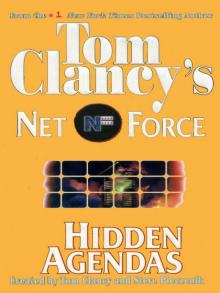 Hidden Agendas
Hidden Agendas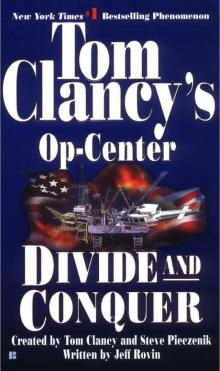 Divide and Conquer o-7
Divide and Conquer o-7